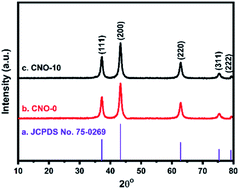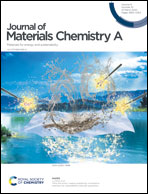Nickel mediated palladium free photocatalytic Suzuki-coupling reaction under visible light irradiation†
Abstract
Suzuki coupling is an important, extensively investigated, and manifold approach for C–C bond construction in synthetic chemistry. However, to date, the reaction has been extensively investigated under thermal conditions using palladium-based catalysts. The development of solar light assisted noble-metal free Suzuki coupling represents a green and sustainable approach for such types of reactions. Herein, we describe an efficient, facile, and cost-effective photocatalytic approach for C–C bond formation between aryl halides and phenylboronic acid via Suzuki-cross-coupling using a cobalt(II) phthalocyanine complex grafted onto a nickel oxide semiconductor at room temperature (RT) and atmospheric pressure. A number of substituted aryl halides have been successfully investigated using the developed protocol and afforded modest to high yields of the desired biphenyls. The possible mechanistic pathway suggested that the formation of photogenerated aryl radical cations from the phenylboronic acid followed by its coupling with aryl radical anions generated from the electron-activated aryl halides resulted in the corresponding biaryls. Importantly, the physical mixture of both components, i.e., CoPc and NiO, showed poor efficiency as compared to the developed hybrid photocatalyst. The recovered photocatalyst could readily be recycled for at least six runs without a significant decrease in the activity.



 Please wait while we load your content...
Please wait while we load your content...